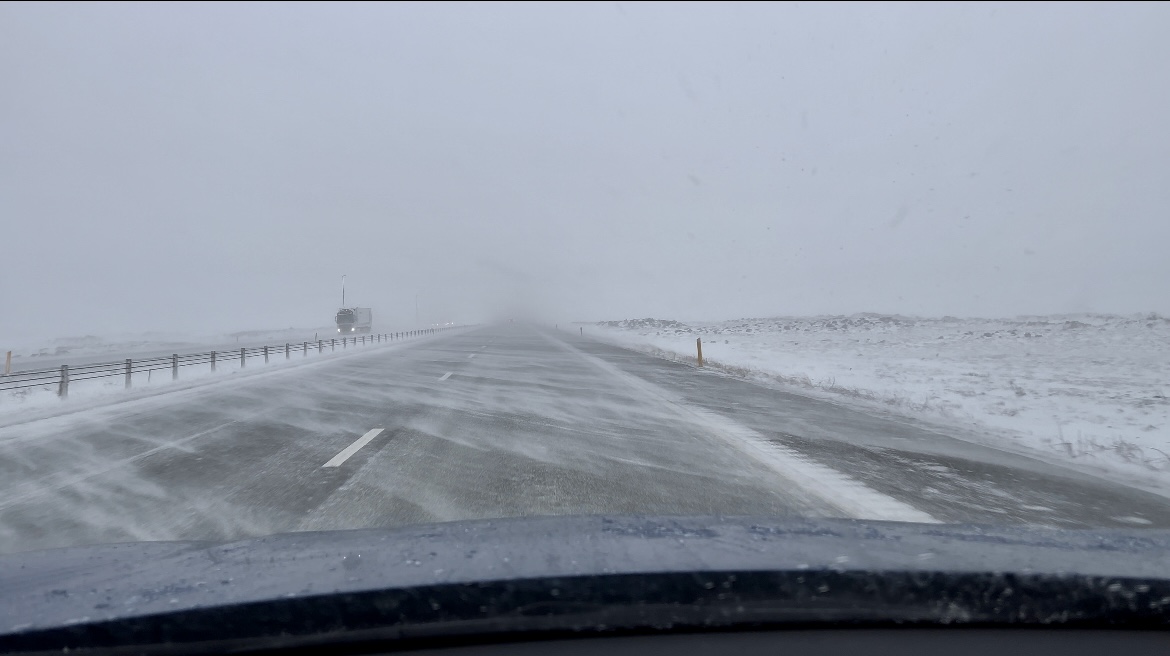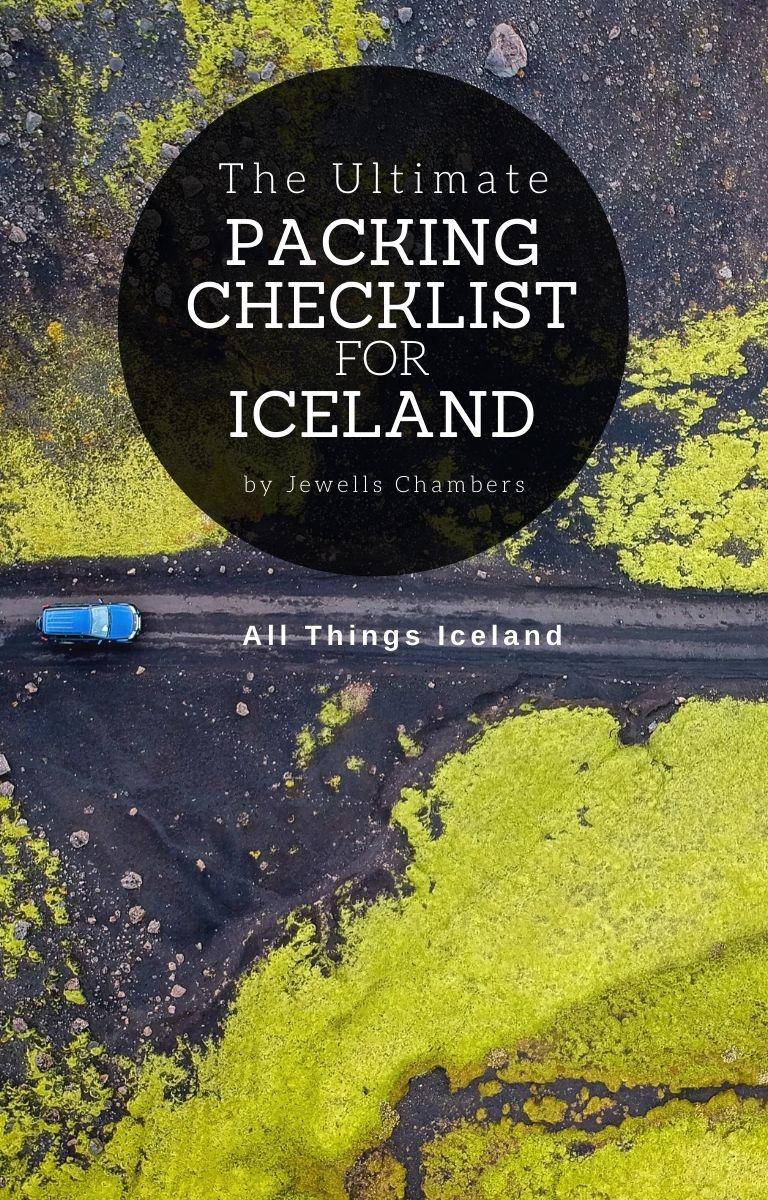

To share more about each month in Iceland, I’m adding an informational series to the podcast. After each month of this year, I will provide insight about what you can expect in the month. Things like the weather, road conditions, what to wear/pack, what makes it worth it to visit during that month, some tips on driving in that time, top activities, and events that happen annually during that month.
Weather in Iceland in January
While the temperature can range from -10˚C to + 5˚C (14˚F to 41˚F), the average temperature, specifically in Reykjavík, in January in from -1˚C to just above freezing at +1˚C (30.2˚F to 33.8˚F).
As you venture out to the countryside, the temperatures are often cooler, especially as you head north. We’ve had an unusually cold winter. To my surprise, there were some places that went as low as -22˚C (-7.6˚F).
On top of the possible weather temperatures, there are wind and/or snowstorms that happen during this time of year. Every winter is not the same but there does seem to be an expectation of more storms in January.
Of course, the wind chill makes the temperatures I spoke about earlier more biting. Depending on what you are used to regarding winter, these numbers might sound intense. Yes, it’s a bit intense but I still think this time of year is an amazing time to visit.
Please keep in mind that no matter the time of year that you visit Iceland, it’s imperative that you try to be flexible with your schedule. I know that sounds challenging when you have a limited number of days but the storms here can be dangerous. This can force you to change the direction you plan to go in or even keep you staying put for a day or two.
A little later in this episode, I talk about what makes it a fun month to visit and I share what I recommend wearing during January in Iceland so you can keep warm and dry.
Day Light Hours in January

At the beginning of January, we start off with a whopping 4 hours and 23 minutes of day light in Reykjavík. By January 16th, we have 5 hours and 29 minutes, and by the 31st we have jumped up to 6 hours and 29 minutes.
Armed with this knowledge, you will be able to make informed decisions when it comes to planning your trip in the country. Shorter days make it harder to see many of the natural wonders around the country but knowing that beforehand will help you manage expectations and the ability to work in other activities that can be done when the sun goes down.
What to Wear in January in Iceland
In my opinion, what you wear in Iceland can make or break your trip. No one wants to be cold and wet. Well, ok most people don’t want to be cold and wet. Side note, I’m really interested in learning the Wim Hof method, so I might end being one of those people that willingly jumps into cold tubs. If you haven’t heard of Wim Hof aka “The Ice Man”, I highly recommend looking him up.
Ok, back to what you should pack and wear in Iceland. I did an episode called “Iceland Packing List for Winter”

Cintamani - High Quality Local Icelandic Outdoor Clothing Company
Before I jump in, I am very excited to share that the sponsor of this episode is Cintamani, an Icelandic outdoor clothing brand that provides high quality clothes for all types of adventures.
I have been a fan of theirs for quite some time because their clothes are amazing. I have a decent amount of items from them that have provided amazing protection against Iceland‘s harsh weather conditions. Because I am so familiar with the brand and the quality they provide, I am happy that I can offer my listeners a discount of 15% off your online purchases with them when you use the code „Jewells“.
If you shop in person, they have a lovely outlet in the Hafnarfjörður area that is on the way from the airport to Reykjavík. Along with new clothing for the season, they have clothes from a previous season in the back being sold at a discount. It’s worth checking out.
My Favorite Clothes from Cintamani
The name of the winter prep game in Iceland is layers. There is a base layer, which can either be wool or a synthetic material, like polyester. The next is the mid-layer, which provides insulation and it can fleece, wool (like a traditional Icelandic lopapeysa), or a synthetic material.
Last, but certainly not least, is the outer layer. It provides protection. A parka that has down or a material like PrimaLoft, a synthetic material found in some of my coats from Cintamani. It’s incredibly warm and light! An outer layer with wind and rain protection is a must as well.
Winter boots with a sole that has good grip and micro spikes to add on to the bottom of your boots are a must! It’s incredibly icy in the capital area and all around the country during winter.
Windproof & waterproof gloves, thick socks, a hat, and scarf will come in handy.
On the other end of the clothes spectrum that is a must to bring is your swimwear. Dipping into a luxuriously warm hot tub when it’s chilly outside is one of the best feelings. Yes, the path to get there from the dressing room can be an invigorating experience but it’s totally worth it.
Road Conditions & Driving in Iceland in January
Road conditions will vary depending on where you are in Iceland. I’ve traveled to the West, South, and North during this time of the year and I’ve encountered mostly icy roads but there were also times when the roads were dry.
The ring road, which circles around the country is paved, so you don’t have to worry about rough roads if you plan to go to many of the popular attractions. There will be a gravel road here or there.
The most important thing is there are nail tires on the rental cars here, so you will have that added bit of traction when driving. It makes a huge difference, especially on country roads. Driving during winter can be challenging if you are not used to wintery conditions.
Even if you are, the wind gusts can shake the car a bit while you’re on the road. I always suggest that people drive at speed that they feel comfortable. It might be a little less than the speed limit bit at least you will get there safely.
Why You Should Visit Iceland in January

- NYE celebrations
- Low season
- The Northern lights
- The landscape is a winter wonderland
- Totally frozen or half-frozen waterfalls
Top Activities to Do in January in Iceland
- Northern Lights
- Ice Cave Tours
- Glacier Tours – hiking & climbing
- Snowmobile Tours
- Skiing & Snowboarding
- Fun Winter Road Trips
- Bathing in Geothermal Pools

January Events in Iceland
- New Year’s Eve
- Þrettándinn – January 6th (last day of Christmas in Iceland)
- Þorrablót
- Reykjavík International Games
- Dark Music Days (Myrkir Músíkdagar)
Before jumping into the random fact of the episode, I would like to thank Cintamani, the sponsor of this episode. Use my code “Jewells” on their website to save 15% on their high quality outdoor clothes.
Random Fact of the Episode
"January and February were the windiest months in Iceland since 1995, with an average wind speed of 10 metres per second (22 mph, 36 km/hour). According to meteorologist Einar Sveinbjörnsson the beginning of the year saw the country battered by near constant ravaging gales. One of the heaviest storms hit the southern parts of the country on February 22 when the strongest gusts of wind measured 63 metres per second (141 mph, 227 km/hour) by Sandfell in Öræfi, South Iceland."
Icelandic Word of the Episode
January – Janúar
